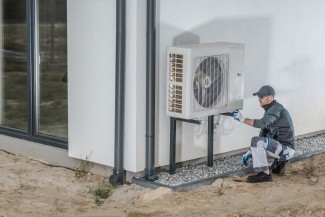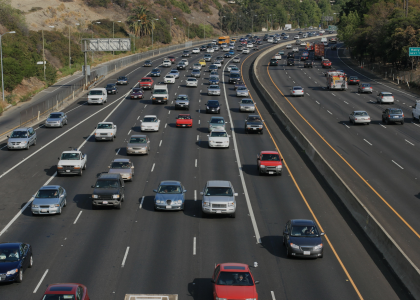Arizona, California, and Minnesota have recently taken climate-forward steps that will use energy efficiency to dramatically cut greenhouse gas emissions while also saving consumers money on utility bills and improving health and safety.
Minnesota lawmakers strengthen and retune efficiency programs
Minnesota Governor Tim Walz recently signed a bill into law that gives utilities more options for how they help customers save energy. The Energy Conservation and Optimization (ECO) Act, passed with bipartisan support and the product of rigorous stakeholder engagement, is a “next-generation energy efficiency resource standard” (EERS) that will modernize state energy efficiency policy.
The law updates the very successful Conservation Improvement Program (CIP), which is funded by ratepayers and run by electricity and natural gas utilities. The law increases the energy savings goals—the EERS—for investor-owned utilities (IOUs) to 1.75% of gross annual retail sales (from 1.5%) and the goal for investor-owned gas utilities to 1% of gross annual sales (from 0.5%). The law also raises energy efficiency spending to assist households with low incomes.
The ECO Act supports the use of efficient fuel-switching improvements (such as from a gas furnace to an electric heat pump) by counting these actions toward a portion of energy savings goals, if the improvements are cost effective, reduce energy use and greenhouse gas emissions, and improve system load factor (a measure of efficiency across the whole system). Until now, Minnesota was one of many states with antiquated rules that prevented utilities from incentivizing customers to switch to the lowest-carbon heating options.
California regulators update rules to enable bigger climate impacts
In California, utility regulators approved new rules last month that reformed the state’s energy efficiency policies to focus on reducing carbon emissions. Despite its long record of success in efficiency, California’s most recent energy savings goals, set in 2019, were just half of what they were in 2015. That was largely because of unbalanced screening tests, which counted all of the costs of energy efficiency and only a portion of the benefits these resources provide, and goal-setting processes that didn’t line up with the state’s policies, including the ambitious goal in SB 350 to double efficiency savings by 2030.
To address these issues, the new efficiency goals will be set in a fuel-agnostic way that removes silos between energy and peak demand savings. Instead of measuring success based on kilowatt-hours, kilowatts, and therms, utilities will have one “total system benefit” (TSB) metric that encourages energy savings at the most valuable times and locations to the grid, and that embraces benefits beyond energy and capacity, including reducing greenhouse gas emissions. The goal is also set based on savings over the lifecycle of technologies, eliminating potential bias toward short-lived measures. As a result, the next set of energy efficiency goals and program offerings from utilities and program implementors, which will take effect in 2024, will better value efficiency as a grid and decarbonization resource. And removing silos between resources like energy efficiency, storage, and demand response should enable more flexibility and market innovation. For example, utilities could design programs that give customers incentives to both manage the timing of their energy use to help the grid and save energy and money on their bill across the year through innovative technologies like efficient water heaters.
The rules encourage utilities to offer more programs that primarily serve people of color and residents with low incomes, including efforts that increase home comfort and safety, improve resilience, and reduce energy bills. The rules also encourage programs that support the long-term success of efficiency companies and professionals, through consumer education, workforce training, and research, development, and deployment of innovative technologies. Each program category—resource acquisition, equity, and market development—will have separate budgets and portfolios, which will be evaluated separately to connect oversight to the purpose of each portfolio. This should enable utilities to maximize equity and market development benefits.
Arizona regulators may extend efficiency goals, set clean energy rules
The Arizona Corporation Commission (ACC) approved a new clean-energy rules package late last month. The proposed package highlights the role of energy efficiency in reducing emissions from the power sector by extending the existing EERS until 2030 and requiring a carbon-free grid by 2070 (an earlier plan would have required fully clean energy by 2050). While there is less evolution in how energy efficiency is valued as a climate-forward resource in this rule, it’s notable that energy efficiency is explicitly embedded as a part of a carbon-free grid rule. As we mentioned in a previous post, Arizona efficiency programs and other clean-energy efforts have been in jeopardy because of policy disagreements among members of the ACC. While this recent vote is a very good development, it sets up another round of public input before the rules can be formally approved later this year.
What’s ahead?
The actions by Minnesota, California, and Arizona follow a banner year for extending, expanding, and evolving EERS around the country. Getting utilities to deliver the energy-saving improvements needed to meet climate goals requires these strong energy efficiency resource standards, along with a host of other tools. Looking forward this year, we hope to see continued progress to implement new EERS and evolve them into climate-forward efficiency policies. New Hampshire, where a settlement agreement on utility programs awaits regulator approval, and Puerto Rico, where a new energy efficiency rule is being deliberated, offer additional opportunities to take big steps in the right direction for the climate and utility customers.





